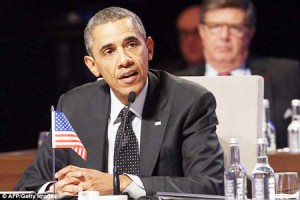On February 18, 2007, at midnight, the Samjhota Express was burnt. The train had passed the Panipat railway station and was heading towards Attari with a large number of passengers. When it approached Diwana station, two of its bogies suddenly caught fire. The fire was so intense that even the steel structure of the bogies melted. That day 68 people had died and dozens injured. The Samjhota terrorists’ act was planned on the standard operating procedure (SOP) of the Hindutva associates and their terror wings. The ‘SOP’ is to plan a terror attack on the selected target and to put the responsibility on ‘Pakistani terrorists’. Anyhow, police discovered one of the suitcases that were thrown out of the train compartment for some reason and also the remains of the other suitcases that carried the explosive RDX.
The forensic reports indicated that some of the explosive materials were bought from a chemical company in Mumbai. Gradually, the Haryana police zeroed in on an army person named Colonel Prohit as the provider. At this point, the higher intelligence authorities close to the Indian government were alerted, and they considered it essential that the Haryana police be stopped from further investigation. They believed if the Haryana police continued their investigation and unearthed the real terrorist mechanism then the whole scheme could backfire. Thus, government was briefed that the matter of the Samjhota Tragedy had ‘international implications’ and so, being very sensitive, the investigation should be taken away from the Haryana provincial police and handed over to a ‘central’ authority. But the cover up effort got a huge setback again. A competent officer, Hemant Karkare, was appointed the head of the Anti Terror Squad in Mumbai. He started investigating various acts of terror within India and refused to bow to political pressures from the rightwing extremist politicians. During his investigation, an act of terror occurred at the Malegaon Mosque on Juma-tul-vida. Malegaon is a suburb of Mumbai. In his investigation, Karkare found the main planner to be a VHP activist, Ms Pragiya Singh Sidhvi, whose motorcycle was found with explosives at the mosque. Soon Hemant Karkare’s team established a connection between Sidhvi and Colonel Prohit who provided the RDX for explosion. Karkare then found the link between Colonel Prohit and the Samjhota Express fire. Karkare’s life was threatened by the Hidutva and the Sangh Privar groups like the VHP, Jan Sangh, Abhinav Bharat, Jagran Munch and several others. But he refused to bow down. He completed his investigation and filed the case with the Nasik court in Mumbai.
His report contained the details in over 4,000 pages and exposed the terror network of the Hindu extremists. Later, Hemant Karkare became the target of revenge by Hindutva terrorists, but it was propagated that he was killed by the firing of the terrorists. The 26/11 terror attacks threw up many controversies. Most died on their own; some were forgotten with the passing of time. But after the death of anti-terrorism squad (ATS) chief Hemant Karkare continued to raise questions. Karkare, additional commissioner of police Ashok Kamte, and encounter specialist Vijay Salaskar were killed on the night of 26/11. “I still do not have the answers to several of my questions,” said Kavita Karkare, the ATS chief’s widow. “I would like to know why it took 40 minutes for help to reach the injured officers in Rang Bhavan Lane despite it being so close to the police headquarters.”
More questions followed. Why was Karkare the only senior police officer to go to the spot? Why were ‘substandard’ bullet-proof jackets supplied to the police? Why was no investigation ordered to find out who was responsible for this? How did the jacket worn by Karkare go missing? “The questions are endless, but there have been no answers,” Kavita said. In 2011, Swami Aseemanand said to be a leader of Rashtriya Swayamsevak Sangh, a Hindu extremist leader had confessed that he was involved in several bombings incidents including India-Pakistan Samjhauta Express train bombing in 2007 in which 68 Pakistani nationals were killed. He was also involved in the bomb blast at Dargah Ajmer Sharif in Rajhasthan in October same year. Three people had lost their lives in that incident. Similarly, Aseemanand was also responsible for attacks on Muslim community in Malaygaon with explosives, where the explosions left 37 people dead.
The court had given him 48 hours and had asked the investigation teams to keep away from him so that it could be determined that he was not accepting the responsibility under duress. But Swami Aseemanand did not change his confessional statement even after remaining in judicial custody for 48 hours and reiterated that he had carried out that terrorist activity. Anand had repeated the same statement in an interview with a manual ‘Karwan’. On 27th August 2014, Swami Aseemanand – accused in three terror cases – had been granted bail by the Punjab and Haryana High Court in the Samjhauta Express blasts case. But with two other cases lodged against him, he was kept at Haryana’s Ambala jail.
The charges against him included murder and sedition were proved; yet Indian government did not challenge the bail granted to Swami Aseemanand, arrested for allegedly masterminding 2007’s deadly attack on the Samjhauta Express. National Investigation Agency or NIA, which handles terrorism cases, had decided “there were no grounds to challenge the Order in the Supreme Court”, the Home Ministry had informed Parliament at a time when the government faced allegations of wanting to shield Hindu extremists accused of terror. Pakistan had taken exception to the bail granted to Swami Aseemanand, and regretted that India was not keeping Pakistan informed about the progress of the case.



